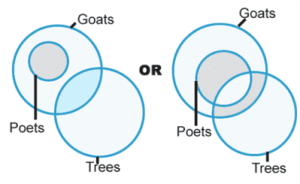Arrangement and Sequencing concepts for CAT appear in the DILR(Data Interpretation and Logical Reasoning) section of the exam. In fact, it is one of the most common question types in the logical reasoning. Most students often struggle with these questions initially. That might be due to the lack of familiarity with logical reasoning concepts and the usage of inefficient approach to solve such questions.
Concept
Arrangements and Sequencing for CAT, as the name suggests, is the act of putting or arranging things in a specific sequence, order, or a list. In our daily life as well, we perform many tasks that ask you to apply these concepts. Making a to-do list, placing an order in a restaurant, taking a test and deciding to attempt it in a particular order and so many more things we do every day consist of arrangements and sequencing.
In the same way, questions on these concepts usually require hypothetical arrangement of people or objects. This arrangement or sequencing is typically done in straight lines or around circles or other geometrical shapes.
In order to be successful in solving questions as such, a student would need to visualize the geometrical shape of the arrangement of the things. Simultaneously, the student must be adept at picking up and putting together clues. The clues are given in the instructions of the arrangements and sequencing questions. Additionally, The visualization of these clues helps a student immensely in sorting out the arrangements quickly.
Here is a list of contexts and their statement clues:
| Contextual Implications | Statement reads as |
| Which variables are exactly placed in the sequence? | A is sixth |
| Which variables are not allowed to be in a specific position in the sequence? | A is not seventh |
| Which variables are next to, before, after or immediately preceding or following one another? | A and B are consecutive; A is next to B;
No variable comes in between A and B; A and B are consecutively in the order or sequence. |
| Which variables cannot be next to, before, after, or immediately preceding or following one another? | A does not immediately precede or follow B;
A is not immediately before or after B; X and Y are not consecutive in order/sequence. |
| How far apart in the arrangement/sequence are two particular variables? | Exactly two people come between X and Y |
| What is the relative position of X and Y in the arrangement? | X is right to Y;
Y comes before X in the queue; Y comes after Z in the queue. |
Approach with Example
There are two types of Sequencing and Arrangement: Strict Sequencing and Arrangement, and Loose Sequencing and Arrangement. In the strict sequencing and arrangement, relative positioning of the variables will be almost fixed. Additionally, There are rules in places which give us the exact position of the variables. Whereas, in loose sequencing and arrangements, the data will tell us the relative positioning of one variable with respect to the other variable—without giving the exact position.
Example:
During the summer placements at AMU, which will run for a single week in June starting from Monday through Friday; Due North Inc. will interview three applicants Omkara, Tyagi, and Keshu. Due North Inc. will conduct exactly five interviews within this week-long schedule with strictly one interview per day.
Further information about the schedule of the interviews is as follows:
- Each applicant has at least one interview
- Omkara has interviews on two consecutive days
- Tyagi has to meet his girlfriend Billo on Wednesday, therfore he cannot have an interview on Wednesday.
- Keshu doesn’t have an interview on Friday as he has to go to meet Dolly who is Omkara’s wife.
- if Tyagi has an interview on Monday then Keshu must be have an interview on Tuesday
1. Which out of the following week’s could be true?
(a) The person whose interview is on Tuesday also has an interview on Thursday
(b) The person whose interview is on Wednesday also has an interview on Friday
(c) The person whose interview is on Monday also has an interview on Tuesday
(d) Tyagi has an interview on Monday and Thursday
2. If in addition to Omkara, one more person’s interview is on two consecutive days, then which of the following could be true?
(a) Tyagi’s interview is on Monday and Omkara’s interview is on Wednesday
(b) Tyagi’s interview on Tuesday and Friday
(c) Tyagi’s interview on Tuesday and Omkara’s interview is on Friday
(d) Keshu’s interview is on Tuesday
Solution:
There are three applicants —Omkara (O), Tyagi (T), and Keshu (K). Due North Inc. will conduct only five interviews, from Monday to Friday. They can only conduct one interview per day. As there are three applicants and five interviews to conduct, then few applicants might have more than one interview.
According to the rules, we know that O has two interviews on two consecutive day. Then, Tyagi cannot have an interview on Wednesday and Keshu cannot have an interview on Friday. Simultaneously, if Tyagi has an interview on Monday then Keshu must have an interview on Tuesday. Therefore, If either of them have two interviews, then they cannot have those interviews on consecutive days.
Addressing Question 1, option (a) has to be eliminated because then, O cannot have interviews on two consecutive days. Similarly, option (b) has to be eliminated because if K has an interview on Wednesday, then he cannot have an interview on Friday. Again, option (d) is not possible because if T has an interview on Monday then, K must have an interview on Tuesday. This is against the rules as O cannot have two consecutive interviews then. Therefore, option (c) is the correct answer. This is possible because O can have interviews on two consecutive days.
Addressing Question 2, option (a) is not possible because if T has an interview on Monday, then K must have an interview on Tuesday, but the question is stating that another person apart from O has to have interviews on two consecutive days. Similarly, option (c) is not possible. Option (b) cannot happen due to the same reason —it doesn’t leave another window for two consecutive days. Therefore, option (d) is the correct answer. O has an interview on Thursday and Friday, K has an interview on Tuesday and Wednesday, and T has an interview on Monday.
Our CAT coaching Kolkata hopes to have cleared any conceptual doubts you may have regarding arrangements and sequencing. If you still face any doubts, drop us a mail at bellingthecat2@gmail.com.






